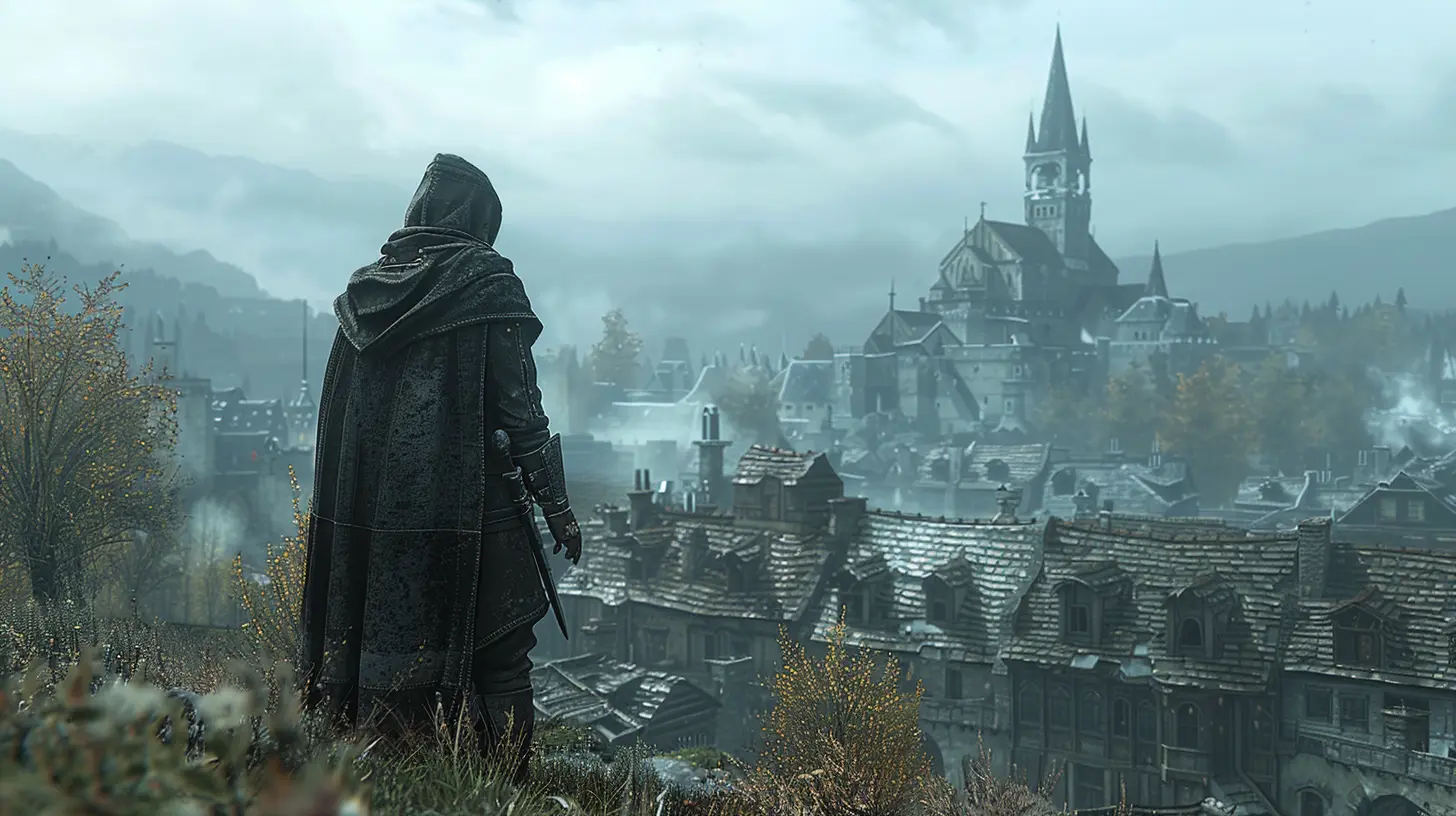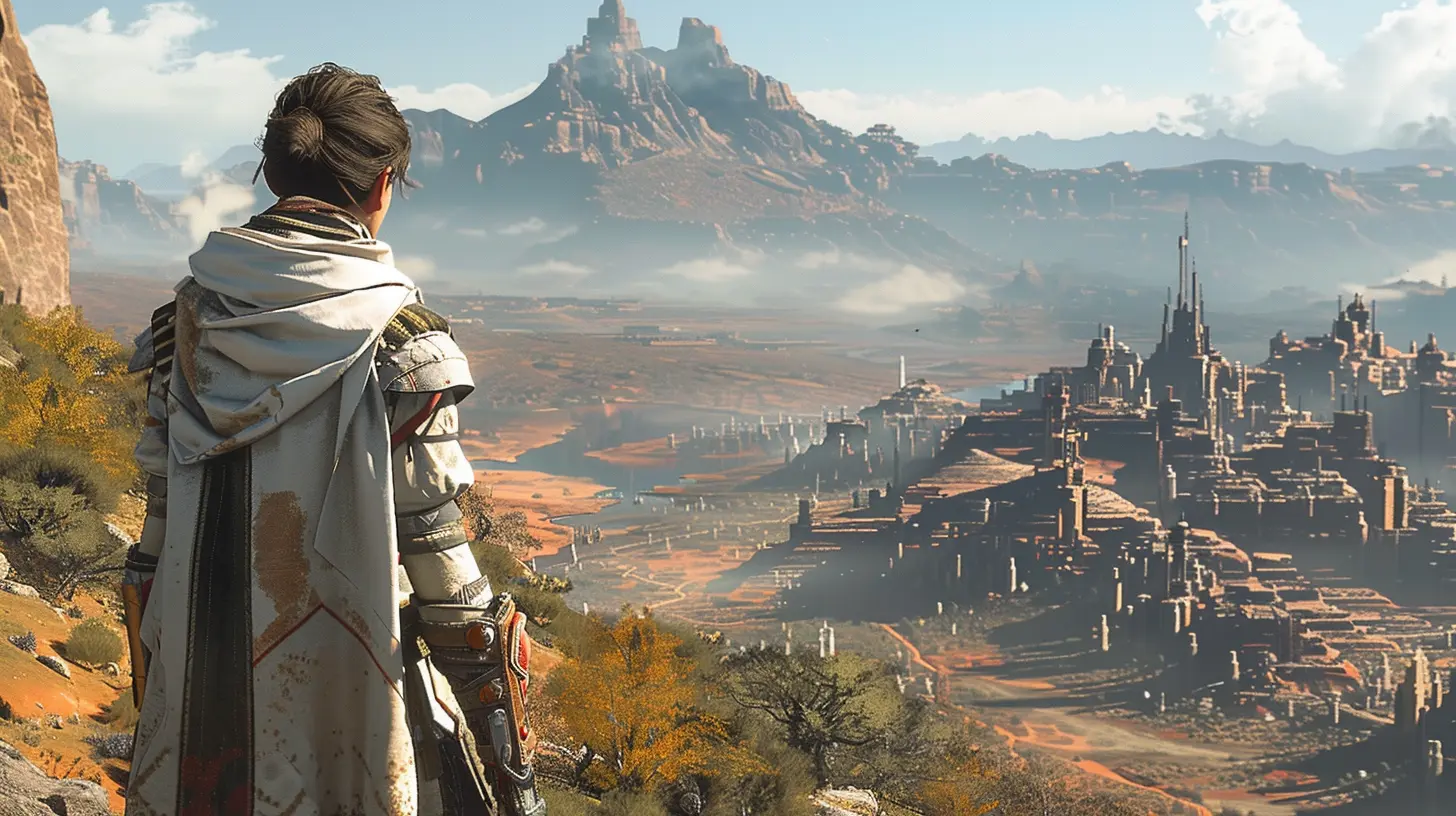Duality of Choice: Linear Storylines in Nonlinear Open Worlds
9 November 2025
Ever found yourself riding your horse through a sprawling fantasy land, only to suddenly remember that there’s an "urgent" main quest to save the world… which you've been ignoring for 40 hours? Yep, we've all been there.
Welcome to the paradox of modern gaming — where you're free to do anything, go anywhere, and be whoever you want... as long as you eventually follow a straight path back to the core storyline.
This brings us to a juicy topic: Duality of Choice: Linear Storylines in Nonlinear Open Worlds. It's a fascinating balance game designers play. Let’s unpack what this really means, why it matters, and how it shapes the way we experience our favorite video games.
What's the Deal with Open World Games Anyway?
Open-world games exploded in popularity for one big reason: freedom. Players love the ability to roam vast landscapes, pick their own goals, and feel like they're truly living in a digital world. Think Skyrim, The Witcher 3, Zelda: Breath of the Wild, or Red Dead Redemption 2.But here’s the catch.
Freedom is awesome… until you start wondering, “What am I actually supposed to do next?” That’s where linear storylines step in.
Linear Storylines: The Backbone of Epic Narratives
Linear storylines are the bread and butter of traditional storytelling. They're a straight path — beginning, middle, end — designed purposefully by the devs to maximize emotional impact, pacing, and plot progression.Even in gigantic sandbox games, there’s almost always a defined path — follow the main quest, meet the big baddie, save the world, credits roll.
But how do you balance a fixed story in a world where players can do absolutely anything?
That, my friend, is where the duality comes into play.
The Duality of Choice: What It Really Means
Imagine reading a “choose-your-own-adventure” book, but no matter which page you pick, the story always ends the same way.That's the duality in play — the illusion of choice.
In these games, you’re given the keys to the kingdom: go wherever, talk to whoever, and stab whatever you like. But the underlying narrative? It’s still on rails. You're not crafting a completely unique story; you're filling the gaps between pre-written scenes.
This design philosophy creates a tension between player agency and narrative intent.
Why Do Developers Mix the Two?
You might be thinking: Why not go full nonlinear, right? Let players truly shape the story from scratch?Well, a couple of reasons:
1. Emotional Payoff Needs Structure
Great stories need pacing. Think about your favorite movie — it didn’t just throw you into the climax 10 minutes in.Game developers want to build emotional highs, surprises, heartbreaks, and triumphs. That’s not easy to do if players can skip major story beats or play them out of order.
2. Budget and Development Time
Branching narratives require massive amounts of content. Imagine creating dozens of storylines for every player choice — it becomes a nightmare of time and money.Linear stories offer efficient storytelling with controlled complexity, while the open world adds replayability and immersion.
3. Player Satisfaction
Here's a truth bomb: Total freedom can feel overwhelming or aimless.A clear main quest gives players a sense of purpose, a guiding light in the chaos of side quests, collectibles, and mini-games.
Let’s Look at Some Real-World Examples
🎮 The Witcher 3: Wild Hunt
Massive world? Check. Tons of side quests? Check.Still, the main story of Geralt finding Ciri unfolds in a pretty linear fashion. Sure, your choices tweak some details, but you’re generally heading toward the same end.
CD Projekt Red gave players endless things to do, while gently nudging them through a structured emotional journey.
🎮 Red Dead Redemption 2
Rockstar’s wild west epic is open to the extreme — fishing, hunting, robbing trains — but the tragic tale of Arthur Morgan is fully structured.You might delay Arthur’s fate, but you can’t rewrite it.
🎮 The Legend of Zelda: Breath of the Wild
Breath of the Wild flips the script a bit. Technically, you can go straight to the final boss after the tutorial.But if you follow the "intended" path (shrines, divine beasts, memory quests), you get a richer story. The narrative may be light, but it's still organized in a semi-linear format disguised in a nonlinear world.
The Power of Illusion: Giving Players “Fake” Choices
Here’s a dirty little secret in game design: players don’t always need real choices — just the illusion of them.If a game makes you feel like your decisions matter, even if they don’t drastically alter the outcome, you’re still emotionally invested.
Games like Mass Effect or Cyberpunk 2077 do this well. Your choices affect people, missions, or side plots, but the main storyline follows a general trajectory.
As long as gamers feel their playstyle is reflected in the world, the magic works.
So… Is This a Problem?
Not really. It’s more of a design challenge.Gamers aren’t dumb. We know the end is usually predetermined. The real magic is how seamlessly a game can blend a compelling narrative with the freedom to play your way.
When done right, linear stories in open worlds don’t feel restrictive — they feel rewarding.
But when it’s done poorly? That’s when players start to ask: “Why does this massive world feel so empty or disconnected from the story?”
Striking the Right Balance: What Makes It Work?
1. Player-Driven Pacing
A game should let you take your time. If you want to chase butterflies for three hours, go for it. But make sure the main mission waits respectfully instead of sulking in the corner.Games like Skyrim nail this — you can be Dragonborn or just the town’s resident blacksmith. Your pace, your vibe.
2. Consequences that Matter (Even in Small Ways)
Even if the endgame is set, the route should feel personalized.Did your choices change how characters treat you? Did a town remember your heroics — or your crimes? These things build immersion.
3. Integration, Not Isolation
Side content should support the main story — not distract from it.In the best games, even your smallest actions echo across the storyline. Side quests reveal character backstory, world lore, or foreshadow future events.
It’s all about making the open world feel like it’s part of the narrative, not a separate theme park.
Let’s Wrap It Up: The Beauty of the Blend
At the end of the day, the duality of choice is a beautiful contradiction. And it’s one of the reasons modern games feel so alive.On one hand, you’ve got carefully written stories with unforgettable characters and moments. On the other, you’ve got player-driven chaos, freedom, and experiences no player will have in the exact same way.
The key is in how the game connects the dots — letting you feel like you're writing your own story, even if the outline is already scripted.
And when that illusion is so good you forget it’s an illusion? That’s when a game becomes legendary.
Final Thoughts: What Should Players Expect in the Future?
We're already seeing games get smarter with how they blend freedom and narrative. AI storytelling, procedural world generation, and player-tracking systems are starting to create dynamic, responsive stories tailored to how you play.The future might just bring us worlds where every action genuinely matters, and every story truly is your own.
But until then? Enjoy the ride — whether you’re following the main road or taking scenic detours through virtual villages and digital mountains.
Game on.
all images in this post were generated using AI tools
Category:
Open World GamesAuthor:

Whitman Adams
Discussion
rate this article
2 comments
Peregrine Mathews
This article brilliantly explores the tension between linear storytelling and the freedom of open-world design. It raises intriguing questions about player agency and narrative depth, highlighting how choices can shape experiences in unexpected ways. A must-read for gamers!
November 15, 2025 at 4:50 AM
Iris McCracken
This article highlights a fascinating contradiction in gaming. While open worlds promise freedom, many still lead players down linear paths. It raises important questions about player agency and narrative engagement. Developers should strive for a balance, allowing true exploration without sacrificing meaningful storytelling. Well done on this insightful piece!
November 12, 2025 at 3:54 PM


